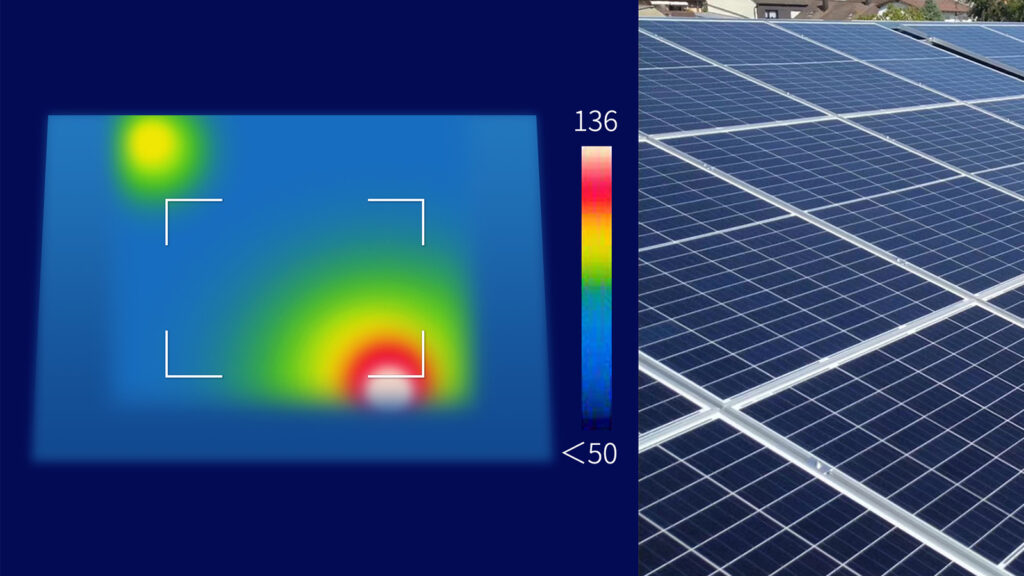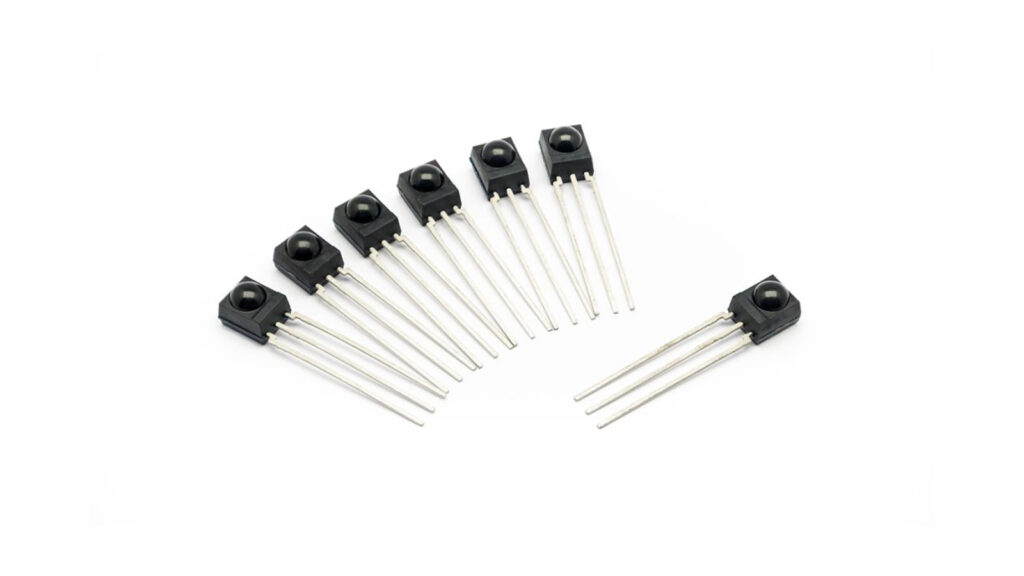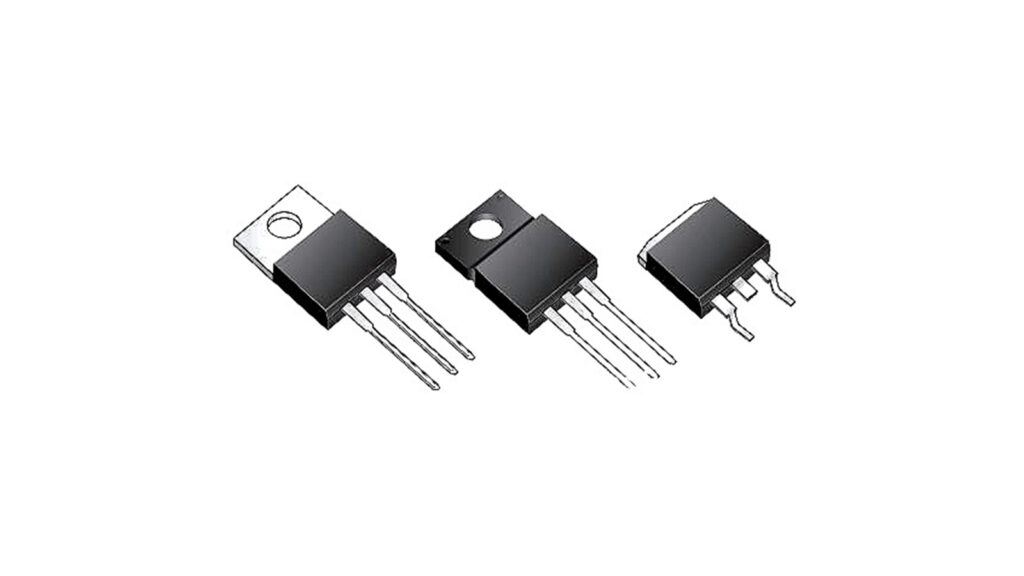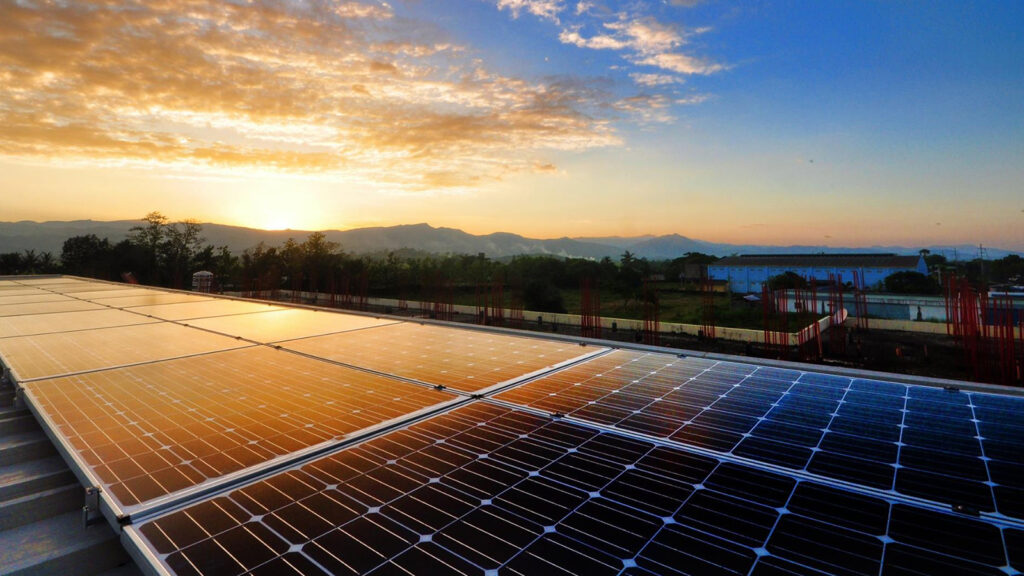Why need MOS(MOS bypass switch):Hot spot effect
Before we can understand MOS and bypass diodes, we first need to recognize a phenomenon that often occurs when PV plants are completed and put into actual use – the hot spot effect. The hot spot effect refers to:
During the actual use of a PV system, solar cells that are shaded for various reasons are unable to generate electricity, and in the overall series circuit, the cells that are unable to generate electricity are treated as loads (resistors) that consume power in the circuit to generate heat. This phenomenon, in which a large amount of heat is generated because the cells are shaded, is called the hot spot effect.
If left untreated, the hot spot effect will cause photovoltaic cells to burn up under intense heat.
This effect can seriously damage solar cells. Some of the energy produced by the illuminated solar cells may be consumed by the shaded cells. To prevent solar cells from being damaged by the hot spot effect, a common solution is to connect a bypass diode in parallel between the positive and negative terminals of the solar cell module to prevent the energy produced by the illuminated module from being consumed by the shaded module.

The Old solution: Bypass diode
A bypass diode is a conventional solution built into a PV module to mitigate the negative effects of partial shading and to increase the total power production.
While bypass diodes have proven to be effective in some cases, they have some drawbacks:
Voltage drop: Upon activation, bypass diodes cause a voltage drop that can affect the overall efficiency of the PV system. This voltage drop can lead to lower power output, especially in partially shaded conditions, thus reducing module performance.
Limited efficiency in complex shading scenarios: The bypass diode is effective when the solar modules are partially shaded. In more complex shading scenarios with multiple shaded areas, bypass diodes may not provide the best solution. In these cases, energy loss can also occur, which can reduce the performance of the module.
Thus, bypass diodes, although useful in conventional situations, still fall short in terms of energy efficiency and adaptability.

The new solution: MOS(MOS bypass switch)
Mason Solar introduces MOS to provide a new perspective on optimizing PV modules for shading situations. Compared to bypass diodes, MOS has some unique advantages of their own:
Energy efficiency: MOS are voltage-controlled devices, while two-phase diodes and triodes are current-controlled devices, making MOS more energy efficient.
High efficiency: MOS offers higher energy conversion efficiency than bypass diodes. Their design and properties minimize performance loss, even in complex shaded scenarios. This results in higher power generation and improved overall system performance.
Fast response: MOS has a short response time to changes in light and dark, allowing them to quickly adapt to changing light conditions. This flexibility ensures uninterrupted power generation and minimizes the impact of shadows on module performance.
Flexibility: Unlike bypass diodes that work in discrete parts of the module, MOS can be individually integrated into each unit or group of units. This flexibility allows for more precise management of shadowing effects and maximizes power generation potential.
Reliability: MOS has only a majority of current carriers involved in the conductivity, whereas with two diodes and triodes, both a majority and a minority of current carriers are involved in the conductivity, so MOS is more thermally stable and less likely to overheat. This property contributes to the higher reliability and longer service life of the PV module.

Maysun’s application of MOS(MOS bypass switch)
By replacing the bypass diode with a MOS , Maysun can provide you with a better product experience:
Maximize power generation: MOS maximizes the power produced by the PV module in the presence of shading, making it more energy efficient and safer to put the PV module into service in the presence of shading.
Only one junction box is required: The installation of MOS eliminates the need for a junction box in the module, leaving only the junction box with lead wires on both ends.
Greater durability: MOS is smaller than other diodes and triodes and can be packaged with the assembly for better protection, thus increasing their durability.
More adaptable: MOS is more adaptable as electrical switches that can conduct in both forward and reverse directions, which helps to maximize power generation.

Maysun Solar’s replacement of bypass diodes with MOS represents a significant advance in optimizing the efficiency of PV modules in shading scenarios. While bypass diodes are traditional solutions with their own advantages, MOS has higher performance, higher energy conversion efficiency, and are more adaptable and suitable for complex shading scenarios.
Since 2008, Maysun Solar has been focusing on the production of various photovoltaic modules, and in the near future, VenuSun products with MOS will be available. Maysun Solar will always pursue greater progress in the photovoltaic industry with innovative thinking that breaks through tradition.

Empowering Factories with Solar Energy A Strategic Tool for Controlling Production Electricity Costs
Commercial and industrial solar is becoming a key solution for factories to reduce electricity costs and hedge against price fluctuations. This article systematically analyzes its deployment models, cost advantages, and sustainable value pathways.

How Businesses Can Offset Carbon Taxes with Solar Power
This article analyzes the latest carbon tax policies and photovoltaic deduction strategies, helping European businesses legally reduce taxes, increase profits through solar investment, and achieve a win-win situation for both economy and environment.

Forecast and Response: Seizing the Next Decade’s Growth Dividend in Europe’s Commercial and Industrial Photovoltaics Market
Maysun Solar analyzes the growth trends of commercial and industrial photovoltaics in Europe over the next ten years, from policies and ESG to technological innovation, helping companies seize the initiative in the energy transition.

How to Calculate Solar System ROI and Optimize Long-Term Returns?
Solar power is becoming a key solution for businesses to reduce costs and improve efficiency. Accurately calculating ROI and optimizing long-term returns are essential to maximizing investment value.

Will Agrivoltaics Affect Crop Growth?
Agrivoltaics combines solar energy and agriculture to reduce up to 700 tons of CO₂ per MW, improve water use, and boost crop growth for sustainable farming.

6.5 Billion Loss Hits Photovoltaics: Reshaping or Elimination?
In 2025, the photovoltaic market may see a turnaround as some companies take early action. A €6.5 billion loss is driving businesses to explore new growth areas like energy storage and hydrogen. Which giants will break through? Industry transformation is accelerating!
Job content: design
Hobbies: watching movies, photography.



